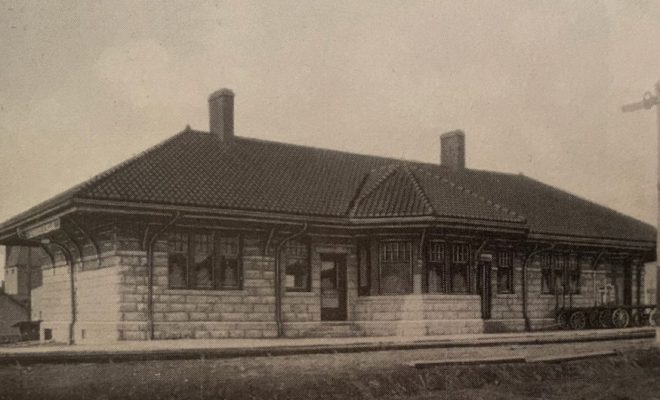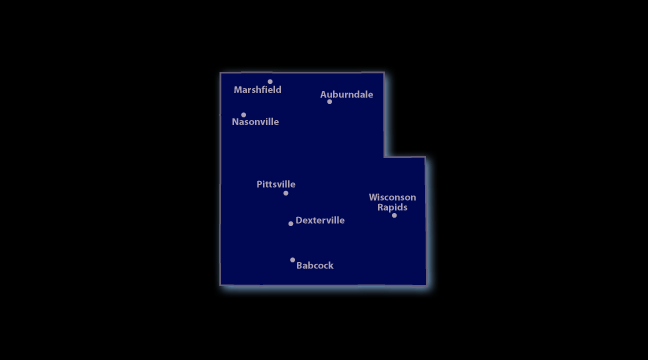November 1900: Pulpwood & the Railroad

By Kyra Jagodzinski
Intern
The paper industry was a booming in Wisconsin throughout the latter half of the 19th century and the early 20th century, and at one point was the third-largest industry in the state.
Connections between paper mills in Wisconsin supported industries around the northeast part of the nation, and largely supported Chicago as it continued to expand. The paper mills needed to transport massive amounts of paper and wood to and from their facilities, and railways were built and bought to expedite transportation as the industry continued to expand.
On Nov. 3, 1900, negotiations opened up for the purchase of the Marshfield & Southeastern railroad, an 11-year-old rail line that stretched 36 miles from Marshfield to Nekoosa. The rail line was built near the Northwestern railroad, which was collaboratively built between the Upham Manufacturing Company and the Wisconsin Central.
Chicago residents Walter A. Scott, president of the Southeastern rail line, and J. M. Whitman, Vice President of the Northwestern rail line, met in Marshfield to discuss investment opportunities that the railroad could bring, to inspect it, and the equipment needed to move forward with the plans made that day. To close the negotiations, the pair returned to Chicago together and finalized the purchase.
In the railway’s early years, the primary portion of its business came from some of the largest paper mills at the time, founded in Port Edwards and Nekoosa. These mills consumed so much pulpwood, or wood that is suitable for producing paper with, that nearly 10,000 train cars were used every year to transport that wood to the mills.
The business conducted using this railway contributed to the substantial length, and it was necessary for two trains to run in each direction daily to successfully handle the large amount of cargo and passengers that relied on the train for their everyday transportation. At times, an extra car or two were even added to successfully haul the pulpwood that the mills required for the day.
To expand the business on the rail lines, travelers often came from surrounding states to assist in the work. One of these travelers was T. S. Roberts who came from Mason City, IA, to assist the head of Northwestern Co., W. K. Cook.
L. Pennifill also arrived in the city that week to look over the Northwestern Co.’s interests, as Cook had scheduled a meeting in Chicago that week. Pennifill told the public that the company had not bought the Marshfield & Southeastern road at that point, but there were offers on the table to do so, and had been there for over three months prior,but the offer was continuously deferred.
If the Marshfield & Southeastern line was not purchased by the Northwestern Co., then the company had plans to build a parallel railroad that stretched the entire length of the Marshfield & Southeastern rail line.
The Marshfield & Southeastern railway was later abandoned, and the Wisconsin Central Railroad began to use it to serve Marshfield and its businesses.
The Wisconsin Historical Society notes: “A logging line named the Marshfield & Southern railroad was built in 1889. The Wisconsin Central Railroad acquired the M&S track when it was abandoned. The Wisconsin Central used it to serve industries in Marshfield. A freight depot on the east side of Maple Ave., between First and Depot streets served this line (not surveyed). Another line originally known as the Port Edwards, Centralia & Northern Railroad also ended up as Wisconsin Central property after it became the Marshfield & Southeastern in 1896. The WC bought it in 1901.”






